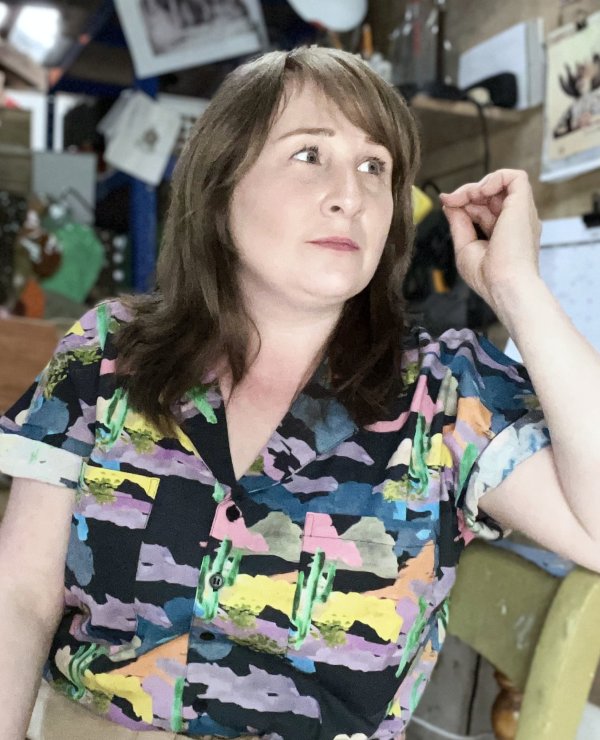Film and photography influence Sarah’s exploration of these dual identities, and the imperfection and ephemerality of memory, of what’s real or re-collected. Her sculptures playfully present multiple (framed & un-framed) realities, offering interpretations that hold darkness and joy.
Sarah is joining us as one of three Convention House Residency seed commissions.
Upscaling the size of art comes with lots of challenges in the making, the production and even storage of the work. As part of her commission, Sarah would like to explore how technology and collaboration can provide the resources and development of working methods for constructing large scale ideas.
Sarah’s current sculptural practice relies upon hand-drawn and hand-cut pieces; a time consuming and labour intensive process that limits the scale of her work. She would like to explore how 3D scanning, printing, and Laser Cutting could be used to improve efficiency in creating sculptural pieces and reduce the barriers involved with hand-making as a solo artist.
Sarah is also interested in exploring how technology can support the design and construction of sculpture that is assembled from ‘flat packed’ designs to reduce the burden and barriers involved in building, transporting and storing sculptural works;
“I would like to test and develop models of collaborative working that improve peer support and reduce the isolation often felt as an Artist working towards larger goals. I believe that, through collaboration, we can use technology and community to improve the accessibility of sculptural work, and reduce barriers to making larger scale sculpture. Developing more creative communities to exchange ideas and share skills would facilitate a more collaborative way of working, providing support for creatives at each stage of project development”

